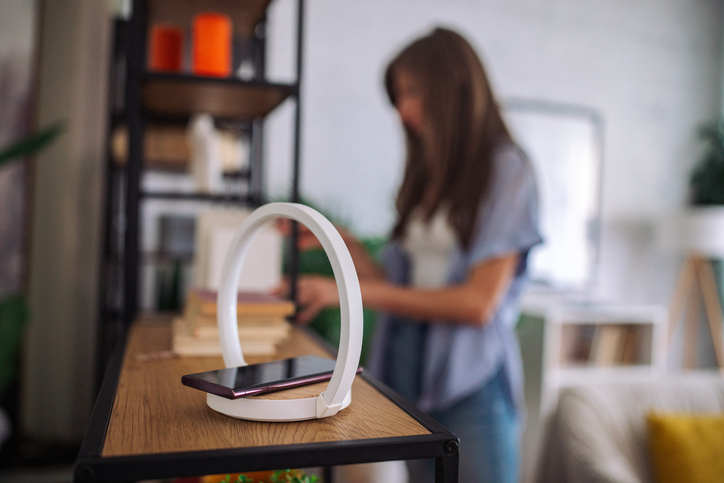Wires get tangled. You trip over them. They turn your minimalist workstation into a mess. So, the idea of swapping to wireless charging sounds like a no-brainer, right? Here are some of the pros and cons to consider before dumping all your charging blocks in the Drawer Where Nothing Is Ever Found Again.

1. Convenience
If you’re thinking of investing in a wireless charger, chances are convenience ranks high on your list of reasons for doing so. But it depends on what kind of convenience you’re after.
Pros: No need to struggle with a charger and a plug point every time you want to charge your device. You can just put it on the charging pad and, like magic, it charges. This works brilliantly if you always charge your phone in the same place – say, on your desk, if you work a desk job – and if you don’t use your phone while you’re charging it.
Cons: Lugging a wireless charger around because you charge your device randomly in different locations is a lot more of a mission than good ol’ wired charging. It’s difficult to use your device while it’s lying on a charging pad. If you travel often, a wired charger is considerably more portable than a wireless charging pad – a power bank with wireless charging capability offers a potential compromise, but you’re limited to the amount of power it can store.
2. Speed
Sometimes, you just need a quick charge on the go to tide you over until you can plug in for longer.
Pros: If you’re someone who routinely misplaces things, you won’t have to waste time looking for your wireless charging pad.
Cons: Although the technology is improving, wireless charging still lags behind high-speed wired charges in the speed stakes. Charging speed can also be affected by other factors, such as where on the charging pad you place your device (it should be in the centre), how you put it down (the back must make contact with the charging pad) and your phone case – a thicker case may impede charging, so you’ll need to remove it every time. Air temperature can also make a difference (charging may be slower on very hot days).

3. Compatibility
Keeping track of all the different chargers for your different devices can be tricky. Wireless charging sounds like the solution – but it depends on your hardware.
Pros: Wireless charging pads work with different types of devices – you can charge your phone, watch and wireless earbuds using the same charging pad, provided they support wireless charging. Charging pads that use Qi (pronounced “chee”) standard tend to work across brands.
Cons: If you’re using an old device, it may not support wireless charging. Most standard charging pads only take one device at a time.

More wireless charging factors
- Battery life: In the past, wireless charging got a bad rap for battery damage – but thanks to smarter heat-management tech, modern phones are pretty chill – literally.
- Cost: Wireless charging pads are more expensive than wired chargers, especially since most devices still come with a charging cable in the box.
- Future-proofing: Apple, in particular, has talked about ditching charging ports on its devices but we’re not there yet. Right now, a USB-C compatible charging block is probably a better investment.
Want the option to charge both wired and wirelessly? Find your ideal smartphone at the Vodacom shop.
